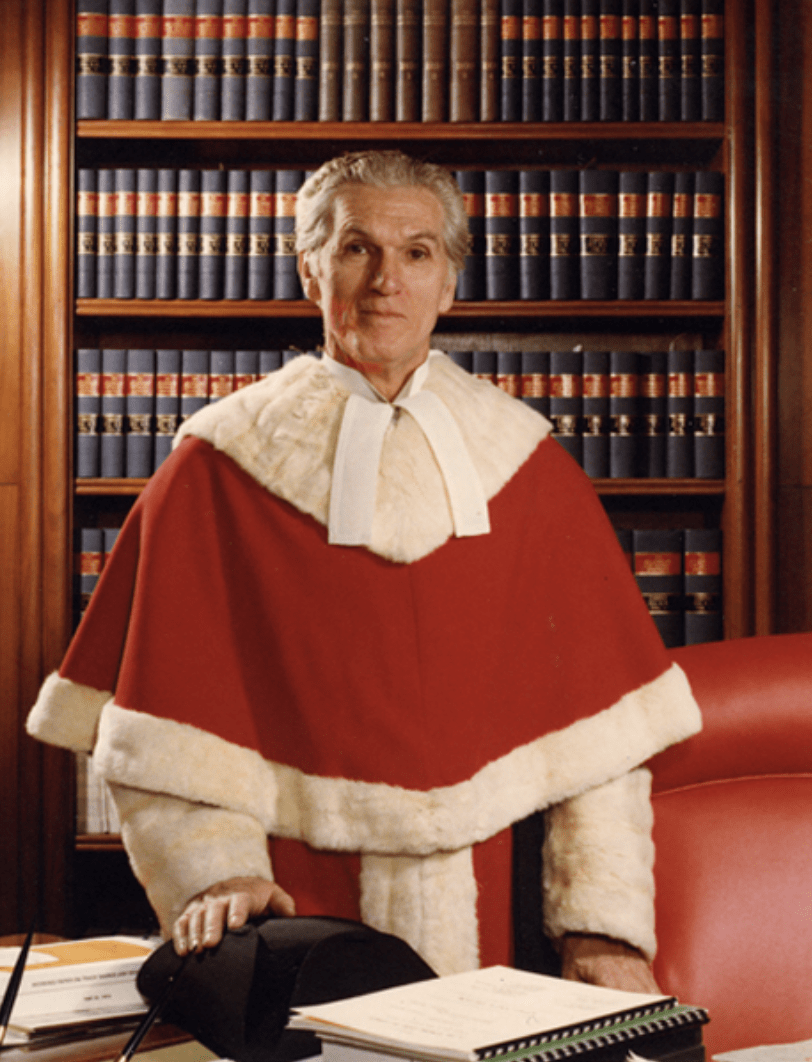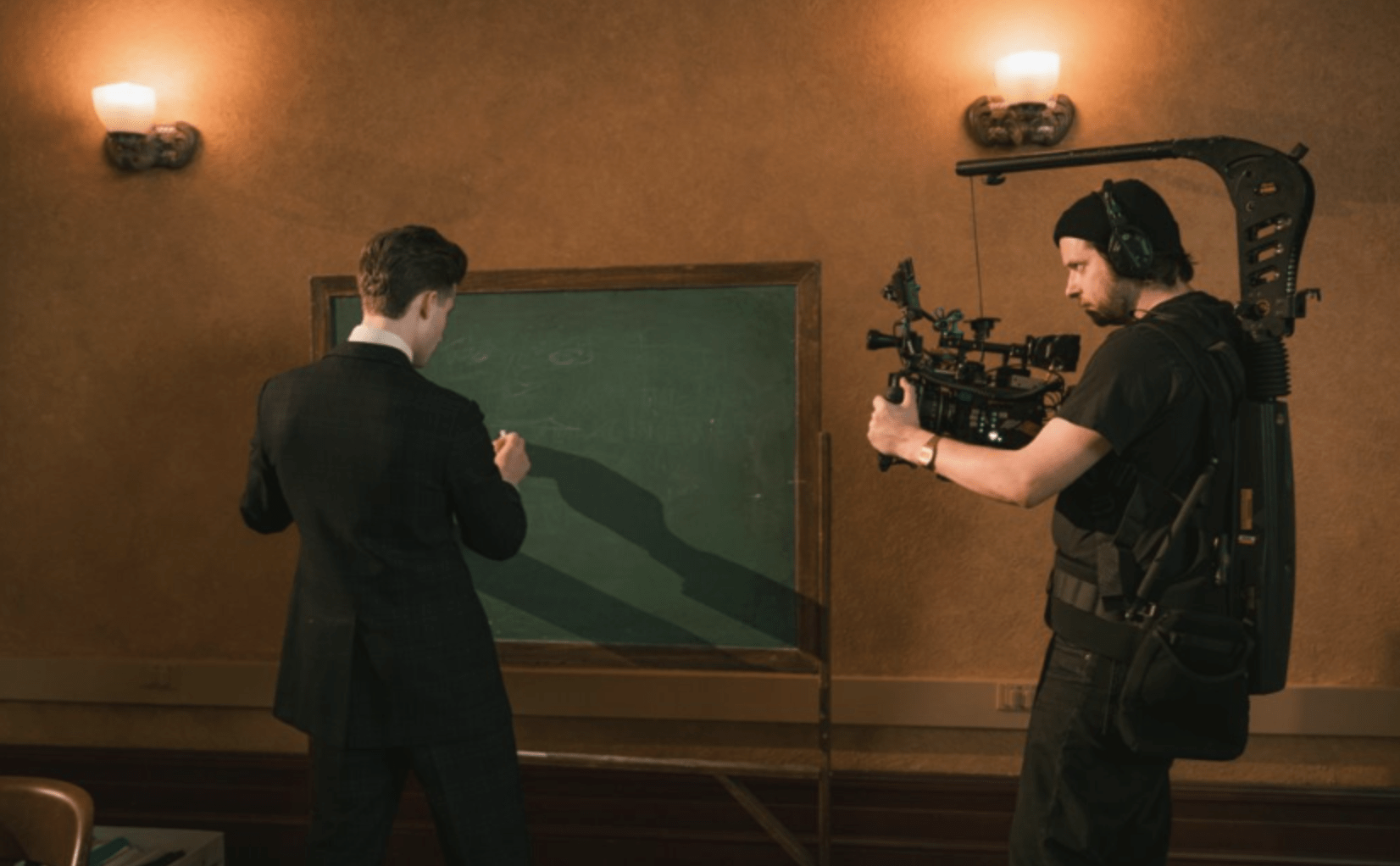The Making of a Minute: Victor Garber Brings Bora Laskin to Life
May 7, 2025
In a sweeping, half-century stage, film and television career, Canadian actor Victor Garber has played everyone from Ernest Hemingway to the Marquis de Lafayette to Liberace. For his latest turn as leading man, Garber, 75, took on the part of a very Canadian hero: Bora Laskin, the first Jewish Chief Justice of the Supreme Court.
“I am the child of Polish Jews,” said Garber of his choice to portray Laskin in the new Heritage Minute. “The moment I saw this, I knew I had to take the role.”
On a grey, chilly November day on a Toronto film set last fall, Garber was tired. His flight from New York — where he now lives — had been delayed for hours, and that meant skipping planned downtime in his hotel and coming straight to the set, where he would spend the next two days. Despite that, Garber was adamant in declining an offer to put off some preparatory steps, causing a delay in production. “If I don’t do this now, the whole crew suffers,” he said. “That’s not the way I work.” That concern for the wellbeing of others is a quality that Laskin also possessed and expected of others.

Bora Laskin/Supreme Court of Canada
Laskin was notable for: his origins as the son of Russian Jewish immigrants Bluma Zengel and Mendel (Max) Laskin, who owned a furniture store in Thunder Bay, Ontario; for his ground-breaking rise through Harvard Law School and the antisemitic obstacle course of Ontario’s legal profession during the 1940s and 50s; for his status as one of Canada’s great legal minds; and for his qualities as a progressive reformer committed to modernizing and strengthening Canada’s human rights legislation.
That background and sense of commitment were the reasons why we at Historica Canada — the charitable organization of which I am the head — chose Laskin as the subject for the newest of our iconic Heritage Minutes.
For the many people who ask how we decide who and what becomes the subject of a Heritage Minute, there are a variety of answers. The Minutes pay tribute to people and/or events that in some way shaped the country in which we live today. Increasingly, we look for subjects highlighting Canada’s diversity — and within that, achievements to the benefit of all Canadians.
In the last couple of years, we have made Minutes about Mary Riter Hamilton, the post-First World War artist; Normie Kwong, the first Chinese Canadian professional football player; Edwin Baker, blinded by a sniper’s bullet and later co-founder of the Canadian National Institute for the Blind — and now Laskin. We have an informal policy of not making Minutes about people who are still with us; among many reasons why, because their legacies, good or bad, are not yet complete.
With more than 100 Minutes now in our catalogue, we long ago learned that each one brings very specific rewards — and challenges. In the case of Bora Laskin, his tenure as chief justice – from 1973 until his death in 1984 — is relatively recent. Unlike with Minutes that recreate events more than a century old, there are people today who can speak not only of the impact of Laskin’s rulings, but also offer firsthand memories of the man.
That puts an even higher premium on our already-rigorous research process to ensure that everything — from the style of clothes and shoes worn to the accuracy of quotes and specific incidents — is verifiably accurate.
To that end, our research team, working with the Toronto-based Accomplice Content Supply Co. film company, had high-end assistance. Laskin’s son John, a retired judge now in his 80s, provided specific counsel on his father’s habits, attitudes, and the formative incidents of his life.
Beverley MacLachlin, Canada’s first woman chief justice – and longest-serving person in that role – helped select the case we highlighted (Murdoch vs. Murdoch), in which Laskin wrote a dissenting opinion that later helped shape a new interpretation of equality in marriage law. MacLachlin, a member of our Historica Canada board of directors, also provided the end-voice narration for the English version of the Minute. Yves Fortier, the renowned international lawyer, former Canadian ambassador to the United Nations and Historica board member, did the French voiceover.
As with all of the more than 20 Minutes with which I’ve been involved, one thing we never worry about is the level of enthusiasm surrounding them.
Sometimes, past and present collide in unpleasant ways. Our research on public attitudes when Laskin was a young man in the 1930s and 40s brought forward incidents of overt and sometimes covert anti-Semitism that have again manifested recently in Canada.
A scene in the Minute where young men with red armbands are handing out pro-Nazi pamphlets draws specifically from a contemporaneous report on the event outside the University of Toronto’s Massey Hall in June 1938. The casual dismissal of a Laskin job application as coming from “a Jew…but not one of those flashy Jews” occurred (unbeknownst to him) during an application for a teaching job at a Canadian university.
On other occasions, the quest for accuracy rests on more benign issues. For a scene depicting Hanukkah at the boyhood home of young Bora, two Jewish crew members had an intense debate over whether the challah bread would have been cut or whole on the table.
As with all of the more than 20 Minutes with which I’ve been involved, one thing we never worry about is the level of enthusiasm surrounding them. The majority are funded by what was previously the federal Heritage department (now the department of Canadian Identity): no government, whether Conservative or Liberal, has ever tried to dictate or interfere with the content in any way.
Our Requests for Proposal inviting film companies to produce the Minutes have on occasion drawn more than 100 applications from across Canada; when we release them on our various digital platforms, they routinely draw more than a million views in first month of release alone (not counting additional exposure on Sportsnet, which shows a selection of our Minutes during such major sports events as the Major League Baseball World Series and the National Hockey League’s Stanley Cup playoffs, with close to 60 million impressions last year.)
 Capturing the young Bora Laskin/Historica Canada
Capturing the young Bora Laskin/Historica Canada
Our longstanding production partner, Sunbelt Rentals (formerly William F. White) has provided camera and lighting equipment to Heritage Minute shoots since 2017. We often also receive support from private companies or donors: in this case, we are grateful to the law firm Norton Rose Fulbright, which took on sponsorship of a formal launch event for our Bora Laskin Minute.
With next year’s 35th anniversary of the making of the first Minutes, we often reflect on the similarities and differences surrounding their production then and now. Brought to life in 1991 by the philanthropist Charles Bronfman – still a member of our board – they pre-dated the internet, winning their audiences on television and, for a while, during previews in Cineplex theatres.
Today, because of the enormous global reach of the internet, the viewing audience is many times greater than in those first years. We have keen audiences via social influencers in countries including the United States, Great Britain, Australia and India. Our combined social media platforms have more than 560,000 followers and the Minutes have been shown at various times on Via Rail trains and West Jet and Air Canada flights. Of course, you can watch them anytime at our www.historicacanada.ca website.
The Minutes went on hiatus in the early 2000s because, frankly, of their high cost, before returning in 2012, the year I joined the organization. Because of enormous advances in technology, the production quality of old vs. newer ones can vary dramatically. But the power and influence of those earlier Minutes are as evident now as then. You need only say “burnt toast” (Wilder Penfield), “I’ve got to stop the train” (the Halifax explosion), or “Now the people will know we were here” (Inukshuk) to a middle-aged Canadian — and many younger ones —and chances are they immediately know the source.
As the person who oversees present-day production, I’m always aware that, as the saying goes, the Minutes stand on the shoulders of their predecessors. I’m reminded of a line from Ken Dryden, the author/politician/Hall-of-Fame goaltender who was once asked what he considered the greatest-ever era of hockey. His answer: “It is whatever it was when you were 12 years old.”
The same, metaphorically, is true with the Minutes. When they work as we hope, they match the scale of youthful dreams and heroes. In doing so, they remind us that Canada remains a place where it’s still possible for good people to take on bad things and make them better.
Anthony Wilson-Smith is President of Historica Canada and former Editor-in-Chief of Maclean’s magazine.
